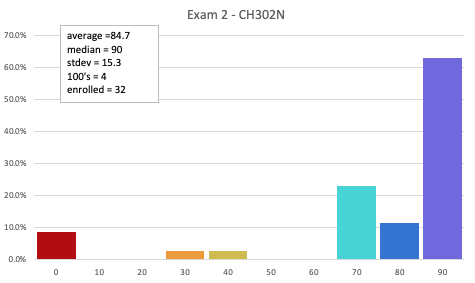Exam 2
Thursday 10/14
2:00 - 3:30pm
🔑 Here are all the KEYS to Exam 2
Learning Outcomes
Students will know...
- how to assign oxidation numbers in ions and compounds
- how to balance a redox reaction in acid and identify the number of moles of electrons transferred
- how to identify what is oxidized and what is reduced in a redox reaction as well as what is the oxidizing agent and reducing agent
- the differences in an anode and a cathode
- how to determine and calculate the standard potential of a cell when only given shorthand cell notation
- how to calculate amount of material converted during a redox reaction using electric current, time, number of moles of electrons, and the faraday constant / specifically that is utilizing → \({I\cdot t\over n\cdot F} = {\rm moles}\)
- how to use the Nernst equation to get a cell potential under NON-standard conditions → \(E = E^\circ -{0.05916\over n}\log(Q)\)
- the names and the differences in the three types of batteries → primary cells, secondary cells, and fuel cells
- the sign convention for voltaic and electrolytic cells (which electrode is positive and which is negative)
- how to classify many common batteries into the three battery types - common batteries are alkaline, NiMH, NiCad, lithium, Li-ion, lead acid
- know the basic redox chemistry (the reaction) of an alkaline cell and a lead acid battery
Exam protocol All you need to know about HOW to take our online exams.
